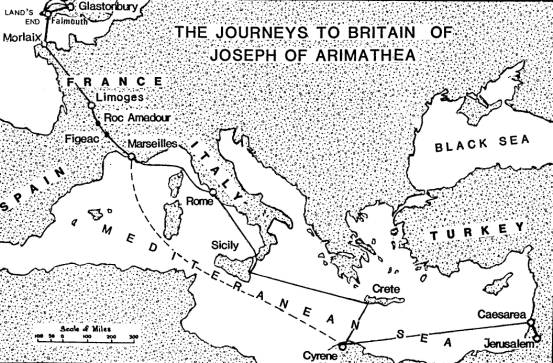
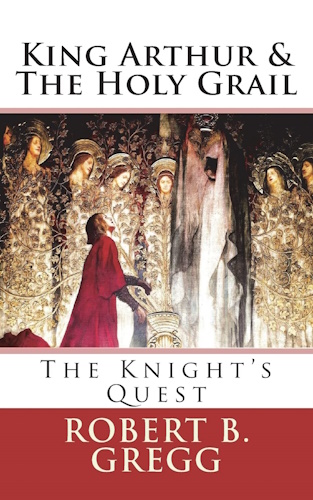

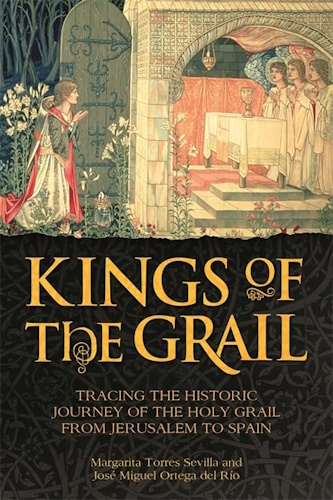

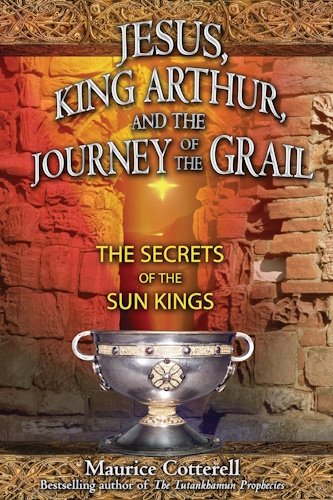



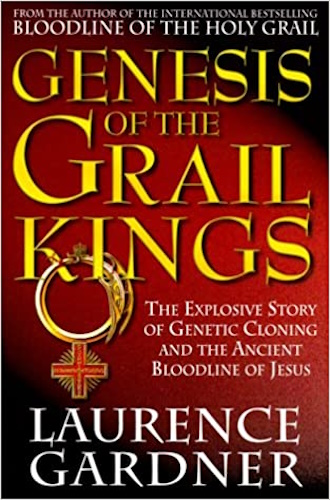

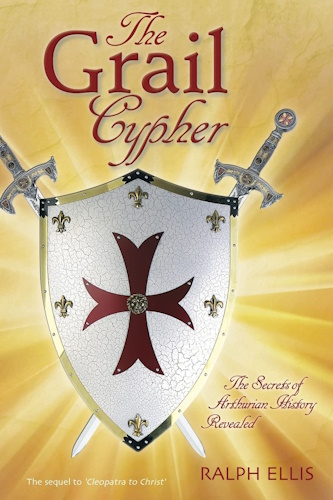

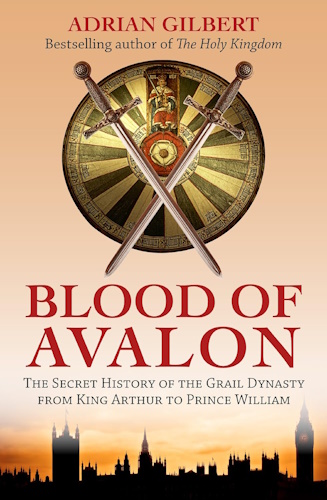


The Holy Grail
and
The Grail-Kings
by David Hughes
2005
Recovered from WayBackMachine
note: "THE HOLY GRAIL"
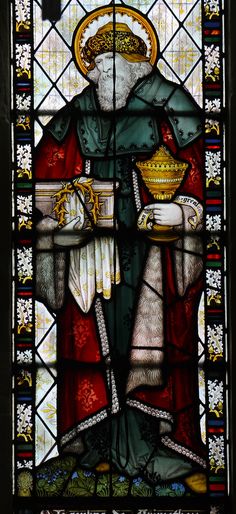
"The Holy Grail," by Norma L. Goodrich (1992), informs us that Joseph of Arimathea is the first person mentioned in history to have possession of the object called "The Holy Grail," after its use by Jesus at the "Last Supper." The word "Grail" derives from the Latin "gradalis" that means "cup" or "chalice." The earliest reference to The Holy Grail is found in a book [now lost] called "The Holy Grail," which is mentioned in later writings, whose author probably wrote the book from materials found in about 200 apocryphal gospels written in the second-century. The Holy Grail was the cup or chalice that Jesus used at the "Last Supper" with which He instituted the "eucharist," the rite of the "bread and wine" (Lk. 22:20), to commemorate the sacrifice of His Body [the bread] and His Blood [the wine] as God's "paschal-lamb" (Gen. 22:8; compare Jn. 1:29; Acts 8:32; 1 Pet. 1:19). It replaced the "Passover" among Christians, who regard the rite (Ex. 12:21) as an Old Testament proto-type of "...Christ, Our Passover..." (1 Cor. 5:7). The Levitical animal-sacrifices (Lev. 1-7) are among the Old Testament proto-types of the New Testament Sacrifice of Jesus. The Holy Grail supposedly contained some of Jesus' Holy Blood collected by Joseph of Arimathea, however, according to Christian doctrine, Jesus, having accomplished His Sacrifice, following His resurrection Easter Sunday, collected His spilled Holy Blood, which could not decay, and, acting, as it were, as the High-Priest fulfilling the "Day of Atonement" (Lev. 16), which New Testament doctrine interprets as an Old Testament proto-type, presented His Holy Blood in Heaven for the sins of the human-race (Heb. 9:12). The true Holy Grail which contains Jesus' Holy Blood sits today upon the high-altar in the celestial temple in Heaven, while its terrestrial counterpart became a holy relic.
The object, called "The Holy Grail," was passed down from generation to generation through Joseph of Arimathea's descendants, who were called the "Grail-Kings." The "Triads" says that the descendants of Joseph of Arimathea were one of the "three saintly lineages" of Britain, which means that his family-line was one of three desposynic descent-lines in Britain. The most complete pedigree of Joseph of Arimathea's descendants, that is, the "Grail-Kings," is given by John of Glastonbury in his "Cronica sive Historia de Rebus Glastoniensibus" (1342), which is based on the pedigree given in the romance known as "L'Estoire del Saint Graal" (1210). Its author drew from the poem "Joseph d"Arimathie" (1205), by Robert de Boron, and a story about The Holy Grail, "Li Conte del Graal" (1190), by Chretien de Troyes, whose source he confessed was an earlier work [now lost] called "The Holy Grail," which was one of the over 200 second-century apocryphal gospels. The link to Arthur was either traced or invented by John of Glastonbury?
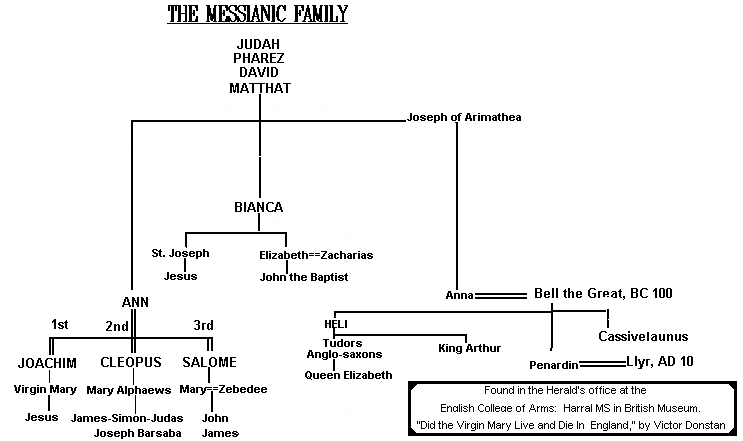
The "Grail-Kings" were said to have been the descendants of Joseph of Arimathea, who, the Virgin Mary's uncle, was a male-line scion of ancient Jewish royalty, and, as Jesus' so-called "uncle," was a member of the "desposyn[o]i" ["the Master's kin"], and, therefore, descended from the Davidic Dynasty, which has a divine-mandate. The son of Joseph of Arimathea, namely, Joseph[es], was the father of two sons, namely, Joshua and Alain "Li Gros" ["the Large"]. Legend says that Joshua and his brother Alain "Li Gros" went from Septimania to "Terre Foraine" with their followers. In "Terre Foraine" a castle was built especially to house The Holy Grail, and to be the home of the religious order, "The Order of The Holy Grail," which Joshua was the founder of and was its first Grand-Master, that is, the first "Grail-King," circa AD 100.There were three grail-castles during the history of the "Order of The Holy Grail." The first grail-castle may have been located on the Isle of Malta, for legend says that its king, Calafes, helped Joshua and his brother Alain "Li Gros" to build the castle. Its name was "Munsalvaesche Castle." The "Order of the Holy Grail" was later removed to the town of Corbeni in Picardy, France, where Corbenic Castle was built as the second grail-castle. The name Corbenic [= "cors benoit"] means "blessed body" [of Christ]. Then, in the time of King Arthur, the "Order of the Holy Grail" was removed to Dinas Bran, Llangollen, Clywd [formerly Denbighshire], in Northern Wales. Its name was "Illes Castle" [so-called in "Diu Crone" by Heinrich von dem Turlin]. The "Order of The Holy Grail" was originally an order of the Jerusalem Church, but when the Roman Emperor Hadrian closed the Jerusalem Church in AD135 and again in 136, St. Hyginus, the Bishop of the Church at Rome, recognized the religious order. St. Hyginus (136-140), St. Pius I (140-155), and St. Anicetus (155-166), the 9th, 10th, and 11th bishops of Rome, were all members of the "Desposyni" ["the Master's kin"]. The "Desposyni" were scattered at the time of the first persecution of the Jerusalem Church in AD 35/36 and its members were bishops of churches all over the Roman Empire. The office of Grail-King, upon the demise of the childless Joshua, passed to his brother, Alain "Li Gros," and, after him, passed to his son, Josue [Joseph, or Joshua II], then, upon his death to his son, Alphanye, then, to his son, Aminadab, then, to his son, Catheloys [Carcelois], who introduced the religious-order of the Castellors, circa AD 200, then, to his son, Emanuel, then, to his son, Titurel, who founded the military-order of the "Knights of the Grail" [the forerunners of the "Templars"], circa 250, then, to his son, Enfertez [Anfortas], then, to his son, Frimutel, then, to his son, Mazadan [Ahura Mazda], then, to his son, Laziliez, then, to his son, Zamphir, then, to his son, Lambor [whose brothers were Addanz and Garlon]. Lambor was the father of Pellam [Pellehan], the father of Pelles "of Corbenic Castle," the Grail-King during the first half of Arthur's reign, the father of Amfortas [II], the Grail-King during the last half of Arthur's reign. King Arthur, according to legend, annexed the religious-order to the British Church and made its military-order of Grail-Knights into one of his orders of chivalry, which was made the highest order of the nine orders of the British knighthood instituted by King Arthur, who "naturalized" the contemporary Grail-King, whose status was reduced from "king" to "keeper" and was officially styled "Keeper of The Grail," Year 519, however, this all is Arthurian romance. The title "Grail-King" was revived after the collapse of King Arthur's regime, and again became an independent religious order.
The Holy Grail is the subject of the late medieval romance "Li Conte del Graal" (1190), by Chretien de Troyes, who makes Perceval [Parzival] the story's hero. Parzival (525) is identified with Sir Percy in Arthurian Romance. Wolfram von Eschenbach says that he wrote "Parzival" (1220) to correct the version Chretien de Troyes gives. Parzival descends from the Grail-King Zamphir through his 2nd son, Addanz, the father of Gaudin, the father of Gahmuret, the father of Parzival. The "son" of Parzival is said to have been Lohengrin, but "descendant" is what is meant here, for Lohengrin has been identified by modern scholarship with Warin of Lorraine (1025), who lived 500 years after Parzival's time. Lohengrin ["Loherenc Garin," whose name is a corruption of the name "Warin of Lorraine"], was the father of the epic crusader hero, Helyas "The Swan-Knight," the last Grail-King, who, the father of Godfred of Bouillon, the leader of the First Crusade (1096-99), accompanied his son to Jerusalem and set The Holy Grail on the high-altar in The Church of the Holy Sepulchre, Year 1099, after which the Knights-Templars became the new custodians and guardians of The Holy Grail and other holy relics. The fact that Helyas "The Swan-Knight" had possession of The Holy Grail indicates that he was very likely descended from the "Grail-Kings," according to "The History of Helyas, Knight of The Swan," by Chevalier au Cygne (tr. by Robert Copland).
The Holy Grail ["grail" = derived from the Latin "gradalis" or "cratalis" meaning a "cup" or "chalice"] was the cup or chalice that Jesus used at the "Last Supper" with which He instituted the "eucharist," the rite of the "bread and wine" (Lk. 22:20), to commemorate the sacrifice of His Body [the bread] and His Blood [the wine] as God's "paschal-lamb" (Gen. 22:8; compare Jn. 1:29; Acts 8:32; 1 Pet. 1:19). It replaced the "Passover" among Christians, who regard the rite (Ex. 12:21) as an Old Testament proto-type of "...Christ, Our Passover..." (1 Cor. 5:7). The Levitical animal-sacrifices (Lev. 1-7) are among the Old Testament proto-types of the New Testament Sacrifice of Jesus. The Holy Grail supposedly contained some of Jesus' Holy Blood collected by Joseph of Arimathea, however, according to Christian doctrine, Jesus, having accomplished His Sacrifice, following His resurrection Easter Sunday, collected His spilled Holy Blood, which could not decay, and, acting, as it were, as the High-Priest fulfilling the "Day of Atonement" (Lev. 16), which New Testament doctrine interprets as an Old Testament proto-type, presented His Holy Blood in Heaven to Almighty God for the sins of the human-race (Heb. 9:12). The true Holy Grail which contains Jesus' Holy Blood sits today upon the high-altar in the celestial temple in Heaven, while its terrestrial counterpart became a holy relic that symbolized the "New Covenant" instituted by Jesus. The Holy Grail was symbolic to Christianity as what the "ark-of-the-covenant" was symbolic to Judaism.
The earliest reference to The Holy Grail is found in a fourth-century book [now lost] called "The Holy Grail," which is mentioned in later writings, whose author [supposedly the Roman Emperor Theodosius The Great, or probably more likely by an un-named cleric in his court] wrote the book from materials found in about 200 apocryphal gospels that were written during the second-century. In the twentieth-century, Norma L. Goodrich cites some old records in her book, "The Holy Grail," that Joseph of Arimathea is the first person mentioned in classical literature to have possession of the object called "The Holy Grail," after its use by Jesus at the "Last Supper." The story of Joseph of Arimathea is given in the "Cronica sive Historia de Rebus Glastoniensibus" (1342), by John of Glastonbury, a medieval writer. The modern author, Reginald F. Treharne, uses "Cronica" as one of his sources in his book, "The Glastonbury Legends" (1975). Joseph of Arimathea appears in "Cronica" as a wealthy Jewish merchant who traveled all over the Roman Empire, and, according to legend, even did business in Britain. He is so called for a small town in the Judean hill-country, Arimathea [Ramallah], called a descendant of King David and of ancient Jewish royalty, and, was the Virgin Mary's uncle. Her father Heli had two brothers, namely, Joseph, and Gjor. The son of Gjor, Simon, was Israel's last king AD 69-70, executed by the Romans, AD 71/73. Joseph of Arimathea is called "uncle" by the "supposed" children of his niece, The Virgin Mary, mentioned in scripture (Mk 6:3), namely, "Saint" James, Jose[ph] "Ha-Rama-Theo," Simon, Jude "of Galilee," and their sisters, Miriam, Anne, and Salome [or Mary, Salome, and Anne]. Joseph of Arimathea, the Virgin Mary's uncle, as "kinsman-redeemer" (Lev 25:25), according to Jewish law, as Mary's nearest senior male relative, claimed her son's [Jesus'] body on her behalf, after His crucifixion, and, the Roman Governor, Pilate, gave Jesus' mother, Mary, her son's body. Nicodemus, a Pharisee, one of the members of the Sanhedrin, and, heretofore, a secret disciple of Jesus, came forward publicly at this time and helped Joseph of Arimathea to take down Jesus' body from the cross. The two men at the bottom of the cross wrapped His body in a linen cloth, reputed to be "The Shroud of Turin," and laid His body in "the garden tomb" (so-called), which was a newly hewed-out un-used cave-tomb originally built by Joseph of Arimathea for himself and his wife. He was one of Jesus' financial-backers, and gave his tomb for Jesus' temporary use. Joseph of Arimathea kept the relics of The Crucifixion, including the Holy Grail.
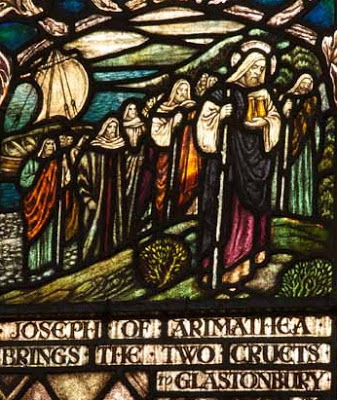
brings the two cruets to Glastonbury
- St. John's Church in Glastonbury -
Legend says that Joseph of Arimathea, called "The Virgin" Mary's uncle, came to Britain as the leader of a party of Christian missionaries, at the time of the first persecution of the Jerusalem Church in AD 35/36; and brought with him to Britain some holy relics, which included (a) the Holy Grail; (b) the "three nails of the cross," and (c) the crown of thorns, which anciently were listed among the "Treasures of Britain." The first persecution of the Jerusalem Church in AD 35/36 dispersed many of its members, and some came to Italy, from where many traveled onto France, and others onto Britain. The medieval Italian writer, Casere Baronius, who wrote "Annales Ecclesiastici," described the voyage of Joseph of Arimathea with a party of about seventy-five Christians, who traveled by ship from Judea to Rome [by way of the Isle of Malta], and eventually came to Britain. This party of Christian refugees also included St. Philip, the disciple/apostle; James "The Less," the disciple/apostle; Simon "Zelotes," the disciple/apostle; Trophimus of Arles, Eutrope of Orange, Martial of Limoges, Saturninus of Toulouse, and others including three Marys, who were: (1) Mary of Bethany [misidentified with Mary Magdalene by Rabanus Maurus in his "De Vita Beatae Mariae Magdalenae"], the sister of Martha, and their brother Lazarus, who eventually settled at Marseilles, France; with Marcella, their attendant, and Parmenus, a deacon, and St. Maximin[us] of Aix; (2) Mary Iacobi, i.e., Mary [Miriam], daughter of Jacob [Yakov], the older half-sister of Jesus‘ foster-father, Joseph, who eventually settled at Civitatensum [Ciudad Ridrigo], Portugal, where she built a church; and (3) Mary Salome, i.e., Mary, daughter of Salome [widow of Zebedee], one of Jesus' cousins; who were said to have traveled by ship to France and disembarked at the town of Saintes-Maries at the mouth of the Rhone. Too, in another party of Christian refugees, came Mary Magdalene, who eventually made her home at St. Baume, or Le Basme, near Aix in Provence, France. The story that Joseph of Arimathea and his party were thrust by their persecutors into a boat "without oars" that drifted to Provence, France, omits part of the story; for other medieval authors who wrote about this story tell us that the party first arrived at Cyrene, then, Malta, before they arrived in Rome, and from there they went onto Marseilles. Rabanus Maurus wrote: "departing Rome..., they came to Marseilles, whence they spread out ...." This is confirmed by Gervais de Tilbury in his "Otia Imperialia" (1212).
Tradition says that it was St. Philip who sent Joseph of Arimathea to Britain, but another tradition says that he was invited there by the British prince Bran "The Fisher-King," who had married Joseph of Arimathea's daughter, Enygeus.
The mission of Joseph of Ariamathea to Britain was received by the British king Cunobelinus [Cymbeline], assuming that "Bellinus" is Cunobelinus, which identification is almost certain. The "De Origine Ecclesiae Britannicae" [written about AD 200 by Elvanus of Avalonius, the 2nd Arch-Bishop of London] says that Christianity was introduced into Britain by Joseph of Arimathea in AD 36. [The date "63" is that of Saint Paul's mission to Britain, not that of Joseph of Arimathea's.]
It is said upon coming to Britain that Joseph of Arimathea and his followers, weary, having walked up Wearyall Hill at Glastonbury, Somerset, drove his staff into the ground to lean and rest upon, and that the staff took miraculous root and grew into a tree, called "The Holy Thorn," which still today blossoms every Christmas.
The first church in the British Isles was built by Joseph of Arimathea and his party at Glastonbury, England, on the site of the old pagan temple there, called St. Mary's, which he dedicated to "The Virgin," his niece. The story is given in the "De Antiquitate GlastoniensisEcclesiae" (1129), by William of Malmesbury, a medieval English writer. Too, Hugh Paulinus de Cressy, a medieval French writer, who quoted freely from the "Annales Ecclesiae Britanniae," a Latin manuscript by an unknown author, spoke of the first church in Britain which he says was built by Joseph of Arimathea. Fire destroyed the original church in the 1100s; and today the "Lady Chapel" marks its site.
Many Britons were converted to Christianity by Joseph of Arimathea and his followers, including some druids, e.g., Dadera "The Druid," as well as three British sub-kings, i.e., Belus [Bellinus], King of Wessex; Seraphe, King of Cornwall, and, Evalh [Evallach], King of Mercia. There are several interpolations in "De Antiquitate," one of which gives three different names of the kings who were converted to Christianity by Joseph of Arimathea, as: Marius, Coilus, and Lucius, but this is just in error for Marius, Coilus, and Lucius were not three contemporary British kings but were three successive generations of British kings ("HRB").
Note that Joseph of Arimathea was misidentified by the author of the second-century apocryphal gospel "Nicodemus" with Joseph "[H]A-Rama-Theo," one of Jesus' so-called "brothers," who also came to Britain. The misidentification of Joseph of Arimathea, "The Virgin" Mary's uncle, with "The Virgin" Mary's "step-son," Joseph "Ha-Rama-Theo," one of Jesus' so-called "brothers" (Mt. 13:55), was perhaps due to the similarity of the spellings of their epithets, that is, "Ari-ma-thea," or "[h]A-rima-theo," which has caused confusion of the details of their respective careers. The epithet "Ha-Rama-Theo" means "the divine highness," or "his royal highness." His epithet is sometimes translated "the Lord's brother." The misidentification was picked up by medieval writers and resulted in their respective stories being woven together, whom some medieval writers made into the same person. For example, it was Joseph "Ha-Rama-Theo," not Joseph of Arimathea, whom the Romans [under Titus, not Vespasian] released from his second imprisonment by the Jews after the capture of Jerusalem in AD70. The confusion here may be that he was released by Vespasian from his first imprisonment at an earlier date. The story, according to the "Vindicta Salvatoris" ["The Avenging of The Saviour"], is about how Vespasian, on learning of the details concerning Jesus' "Passion," thinking the Jews undeserving of statehood for rejecting their king, laid siege to Jerusalem, AD 66-69, however, was called back to Rome due to a struggle over the imperial throne, and left the Jewish War to his son, Titus, the future emperor, who took Jerusalem and destroyed the city, in AD 70, and completed the conquest of Palestine by AD 73. Joseph "Ha-Rama-Theo," in AD 73, returned with Titus to Rome, along with other members of Jewish royalty. Joseph "Ha-Rama-Theo" was courteously treated by the [now] Roman Emperor Vespasian as an important prince. In AD76, it is recorded that Joseph "Ha-Rama-Theo" accompanied Vespasian to Britain on his campaign against the rebel British king Arviragus. The story of the rebellion of the British king Arviragus and his reconciliation with Vespasian is told by Geoffrey of Monmouth in his "Historia." John Hardying, in his "Chronicle," tells us that the British King Arviragus gave Joseph "Ha-Rama-Theo" [not Joseph of Arimathea], who accompanied the Roman Emperor Vespasian during his British campaign, twelve hides of land in Britain as his estate, and, his descendants are called in the Welsh "Triads" one of the "three holy families" of Britain. It was Joseph "Rama-Theo" [not Joseph of Arimathea], who, in AD 76, with ten companions, traversed Britain preaching the gospel during Arviragus' reign. Joseph of Arimathea was already dead by this time having died in Britain some years earlier (AD 58), and was buried in the cemetery in the churchyard of the Glastonbury Church, St. Mary's, which he had built. Joseph "Ha-Rama-Theo" returned to Rome with Vespasian along with one of his sons, Josue "El-Harami," and, eventually returned to Palestine and took up residence at Nazareth, which seems to have become the "family-headquarters" (so to speak), however, the other son, Jasna "Piliste" [his epithet refers to his place of origin in "Palestine"], remained in Britain to tend to the affairs of the estate given to his father by the British king. This estate was run by him and his descendants, who emerge in medieval times as the Welsh lords [later kings] of Garthmadrun, which the Roman Emperor Maximus rose in rank to a regional-kingdom, circa 383. His descendants were called in the "Triads" one of the "three holy families" of Britain, that is, one of the three "desposynic" families [descendants of "The Holy Family" and its relatives] who had settled in Britain.
Following the death of Joseph of Arimathea in AD 58 the Jerusalem "Mother" Church, sent Britain its first bishop, namely, Aristobulus, who had been one of "the seventy" disciples (Lk. 10:1,17), another group of Jesus' followers. He was ordained Bishop of Britain by St. James, called "Major" or "The Just," the eldest of Jesus' so-called "brothers" (Mt. 13:55), the first Bishop of the [Jerusalem] Church [not St. Peter]. The "Menology," which is a collection of notes about saints, compiled in the ninth-century from all the eastern churches, says that Aristobulus was Britain's first bishop. Dorotheous, Bishop of Tyre, stated that "Aristobulus," whom Paul saluted (Rom. 16:10) was the first officially recognized Bishop of Britain. He was the first in a succession of bishops credited by the Jerusalem Church over the next three hundred years, until the fourth-century when the Church at Rome replaced the Jerusalem Church in the government of the western churches. As a result the Church in Britain developed a separate existence as the Celtic Church of the Early Middle Ages.
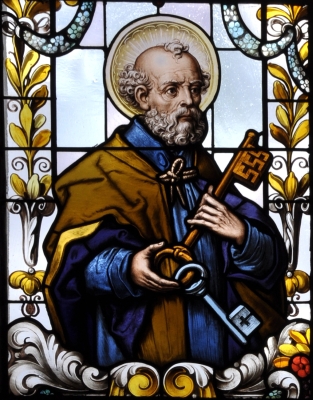
St. Peter traditionally came to Britain in AD 62 and built a chapel on the future site of Westminster Abbey in London, which is still traditionally called St. Peter‘s Chapel after him. Old St. Peter's Abbey following a persecution of Christians during the second-century AD was turned into the "Temple of Apollo" by the pagan Roman authorities.
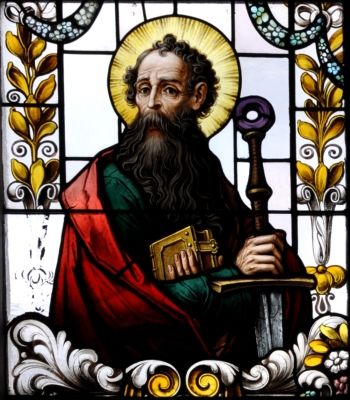
The next year, AD 63, St. Paul, the Apostle, between his two imprisonments, came himself to Britain, on a missionary tour, and built Old St. Paul's Cathedral in London.
Meantime, after Joseph of Arimathea's death, the holy relics, that is, The Holy Grail, etc., were temporarily entrusted into the keeping of three of Joseph of Arimathea's followers, namely, Nascor, Manaches, and Lucans, the deacons of the Glastonbury Church, who in turn passed the relics onto [another] Joseph[es], called Joseph of Arimathea's son, who came to Britain to take over his late father's ministry as pastor of the Glastonbury Church. There is a note in the "DeAntiquitatae" that tells us Joseph of Arimathea was accompanied to Rome by his son, Joseph[es], who eventually followed his father to Britain, however, not until after his death.
However, here, Robert de Boron, the medieval author, interwove into his writings the legend of the first-century British prince Bran "The Fisher-King" [who is often misidentified with St. Bran "The Blessed," the fifth-century British prince] into the story of "The Holy Grail," and spins a yarn about how Bran "The Fisher-King" came into possession of the Holy Grail, which was picked-up by later authors, and, thus, entered medieval romance. That set the stage for the substitution of Joseph of Arimathea by Bran "The Blessed" in the revision of the "Myvyrian Archaiology," which is a collection of ancient documents.
note: The Legend of Bran "The Fisher-King," so-called for duplicating one of Jesus' miracles, the 1st-century British prince, the brother of Beli, the son[s] of the British ex-king Dubnovellus [Dunvallo] in exile in Rome, has been confused with other figures of that name in history, among whom were: (a) Bran, the brother of Beli Mawr, who flourished in the 5th/4th century BC; (b) Bran, the brother of Beli, the sons of Dunvallo "Molmutius," who flourished in the 5th-century AD; and (c) Bran, "The Blessed," the Welsh "Bran ap Llyr," son of the 5th-century AD local British king Llyr "Lleidiath," and, father of Cerdic "of Wessex." More recently, another example of misidentification is that of making Bran and Beli into father and son rather than brothers.
Bran married the daughter of Joseph of Arimathea, Enygeus, and was among the followers of Joseph of Arimathea, who came with him to Britain in AD 36. He is confused in one story with his brother, Beli, which makes him the husband of Anne. Bran appears suddenly in the middle of the medieval romance, "L'Estoire del Saint Grail," among the followers of Joseph of Arimathea without having previously been introduced, suggesting that the readers would already know who he was. In the story he was among those who came to Britain in the second wave of Christian missionaries, which party was led by Joseph[es], the son of Joseph of Arimathea, who eventually followed his father to Britain. In another story it was Bran, converted by St. Paul, who is said to have brought Christianity to Britain, accompanying Aristobulus to Britain, AD 58, and was therefore called "The Blessed."
The 1st-century Bran is sometimes called "The Blessed" ["Bendigeid"] from the circumstances of his conversion to Christianity, however, the 5th-century Bran is the original Bran called "The Blessed," and rightly so, for the sibyl's prophecy that his descendants would give Britain a great line of kings, which is the case for identifying his son, Cerdic, with Cerdic of Wessex, and, also for having brought the "True Cross" to Britain from Old St. Peter's Basilica in Rome, circa AD 475, when the Church had sunk to the depths of selling its relics. The misidentification of the 1st-century AD Bran [son of Dubnovellus] with the 5th-century Bran [son of Llyr "Llediaith"], called "The Blessed" ("Bendigeid"), the father of Cerdic, set the stage for the misidentification of the 5th/6th century AD "Cerdic ap Bran" with the 1st-century AD British hero-king Caratacus, of which name "Cerdic" is a variant form; and, due to the false equation of the 1st-century "Caratacus, son of Cunobelinus," the Welsh "Caratauc map Cinbelin," with the 5th/6th-century "Cerdic ap Bran," some medieval writers incorrectly substituted Bran "The Blessed" for Cymbeline, which erroneously made the 5th-century Bran into the father of the 1st-century Cerdic, and, thus, further confused the genealogy of the Old British Royal House as recorded in some medieval manuscripts. The substitution set the stage for several misidentifications by medieval writers, and laid the foundation for numerous fables in medieval romance. It appears that medieval writers during the 9th-century connected the 1st-century Cerdic with the complex myth of St. Bran "The Blessed," the father of the 5th/6th century Cerdic. To add to the confusion, the story of Bran, the brother of Beli Mawr, was meshed with the story of Bran "The Blessed" [and his son, Cerdic], whose story borrowed from other British legends, including the story of Caswallawn, the 1st-century BC British king of the same name. Hence, we find in the "MAB" the fable of Caswallawn, called son of Beli Mawr, who is said to have usurped the throne while Bran "The Blessed," the King of Britain, was absent on campaign in Ireland on a mission to rescue his sister, Branwen. Caswallawn, according to the "MAB," slays the regents whom Bran had left in charge in Britain except St. Bran's son, Cerdic, since Cerdic's mother was Caswallawn's sister. Here, the 5th-century AD British king Caswallawn is confused with the 1st-century BC British king, namely, Caswallawn [I]. Their stories which were originally historical events which took place chronologically in completely different times were meshed together to make a very un-historical fable. The descendants of Bran are called the "Fisher-Kings" in medieval romance, which confused them with the descendants of Joseph of Arimathea who were called the "Grail-Kings." The family of Bran [some versions say "Beli"] is listed as one of the "three saintly families" of Britain in the latest edition of the "Triads" (MA, 3rd Ser. Triad 18, Iolo MS), replacing the family of Joseph of Arimathea in the earlier versions (TYP # 81).
The Holy Grail, however, was passed down for about a thousand years from generation to generation through Joseph of Arimathea's descendants, who became a dynasty called the "Grail-Kings." The "Triads" says that the descendants of Joseph of Arimathea were one of the "three saintly lineages" of Britain, which means that his family-line was one of three desposynic descent-lines in Britain. The most complete pedigree of Joseph of Arimathea's descendants, that is, the "Grail-Kings," is given by John of Glastonbury in his "Cronica sive Historia de Rebus Glastoniensibus" (1342), which is based on the pedigree given in the romance known as "L'Estoire del Saint Graal" (1210). Its author drew from the poem "Joseph d"Arimathie" (1205), by Robert de Boron, and a story about The Holy Grail, "Li Conte del Graal" (1190), by Chretien de Troyes, whose source he confessed was an earlier work [now lost] called "The Holy Grail," whose author used second-century apocryphal gospels as his sources. The genealogical-links to King Arthur were either traced or invented by John of Glastonbury.
The "Grail-Kings" were said to have been the descendants of Joseph of Arimathea, who, the Virgin Mary's uncle, was a male-line scion of ancient Jewish royalty, and, as Jesus' so-called "uncle," was a member of the "desposyn[o]i" ["the Master's kin"], and, therefore, descended from the Davidic Dynasty, which has a divine-mandate. The son of Joseph of Arimathea, namely, Joseph[es], was the father of two sons, namely, Joshua and Alain "Li Gros" ["the Large"].
Legend says that Joshua and his brother Alain "Li Gros" went to "Terre Foraine" with their followers, and there built a castle especially to house The Holy Grail, and to be the home of the religious order, "The Order of The Holy Grail," which Joshua was the founder of and was its first Grand-Master, that is, the first "Grail-King," circa AD 100.
There were three grail-castles during the history of the "Order of The Holy Grail" and the "Grail-Kings." The first grail-castle may have been located in Septimania, and, it is said that the King of the Isle of Malta, Calafes, helped Joshua and his brother Alain "Li Gros" to build the castle, which was called "Munsalvaesche Castle." The "Order of the Holy Grail" was later removed to the town of Corbeni in Picardy, France, where "Corbenic Castle" was built as the second grail-castle. The name Corbenic [= "cors benoit"] means "blessed body" [of Christ]. Then, in the time of King Arthur, the "Order of the Holy Grail" was removed to Dinas Bran, Llangollen, Clywd [formerly Denbighshire], in Northern Wales. Its name was "Illes Castle" [so-called in "Diu Crone" by Heinrich von dem Turlin].
The "Order of The Holy Grail" was originally an order of the Mother Church at Jerusalem, but when the Roman Emperor Hadrian closed the Jerusalem Church in AD 135/136, St. Hyginus, the Bishop of the Church at Rome, re-commissioned the religious order. St. Hyginus (136-140), St. Pius I (140-155), and St. Anicetus (155-166), the 9th, 10th, and 11th bishops of Rome, were all members of the "Desposyni" ["the Master's kin"], who were scattered by the first persecution of the Jerusalem Church in AD 35/36 and its members were now by this time bishops of churches all over the Roman Empire.
Upon the death of the childless Joshua, the first Grail-King, the office passed to his brother, Alain "Li Gros," and, after him, passed to his son, Josue [Joseph, or Joshua II], then, upon his death to his son, Alphanye, then, to his son, Aminadab, then, to his son, Catheloys [Carcelois], who introduced the religious-order of the Castellors, circa AD 200, then, to his son, Emanuel, then, to his son, Titurel, who founded the military-order of the "Knights of the Grail" [the forerunners of the "Templars"], circa 250, then, to his son, Enfertez [Anfortas], then, to his son, Frimutel, then, to his son, Mazadan [Ahura Mazda], then, to his son, Laziliez, then, to his son, Zamphir, then, to his son, Lambor [whose brothers were Addanz and Garlon]. Lambor was the father of Pellam [Pellehan], the father of Pelles "of Corbenic Castle," the Grail-King during the first half of Arthur's reign, the father of Amfortas [II], the Grail-King during the last half of Arthur's reign.
LINE-1: The "GRAIL-KINGS" [list & genealogy]
(00) Joseph of Arimethea, The Virgin Mary's uncle (above) (dc AD58) [who is recorded to have possession of "The Holy Grail"], who by his wife Alyuba, begot
(00) Joseph[es], son (d82?), whose sister, Enygeus, was the wife of Bran "The Fisher-King," a British prince, the brother of Beli, the husband of Anne, one of Jesus' so-called "sisters"
the issue of Joseph[es] (above):
01. Joshua (Jesus), the first Grail-King, circa AD 100
02. Alain "Li Gros" ["The Large"], Grail-King, his younger brother
= [his cousin] Elis, daughter of Bran "The Fisher-King" [the husband of Enygeus, Joseph of Arimathea's daughter]
03. Josue, Grail-King, had a bro, Isaiah
04. Alphanye, Grail-King
05. Aminadab, Grail-King
06. Catheloys [Carcelois], Grail-King, built Corbenic Castle to house The Holy Grail & as the religious order's home. [note: "Corbenic," is derived from "cors benoit" [= "blessed body"], whence the town of "Corbeni" in Picardy, France, got its name.] The religious order removed to Britain in the early 500s, circa AD 519, and left "Corbenic Castle" empty. The castle was razed by Charlemagne, circa 800; he also founded the religious-order of the Castellors, which was later suppressed by the Medieval Church], and, was the father of
07. Emanuel, Grail-King, the father of
08. Titurel, Grail-King, founded military-order of the Grail-Knights, c AD250, the father of
09. Enfertez [Anfortas I] (275), Grail-King, the father of
10. Frimutel, Grail-King, the father of
11. Mazadan [Ahura Mazda], Grail-King, the father of
12. Laziliez, Grail-King, the father of
13. Zamphir (Zamfir; Zambor) (Zamvirz), Grail-King (375), who had 3 sons
the three sons of (13) Zamphir (above), were
14A.Lambor, Grail-King (400)
14B.Galegant [Garlon], the father of (15A) Tampenteire [father of Kardeiz [I]], (15B) Gurnemanz, & (15C) Manpfilkjot
14C.Addanz, see LINE-2 (below)
the issue of (14A) Lambor (above) were
15A.Pellam [Pellehen], Grail-King
The issue of Pellam, Yglais's brother, was a son Pelles of Corbenic Castle, the father of Amfortas "Fisher-King," the last of the main-line. He married Orgeluse, and begot a daughter Elayne who died unwed and childless. Amfortas had two sisters, one, Herzeloyde, [2nd] wife of Gahmuret, was the mother of Parzival; and, the other sister Elaischoye, married Lancelot, and was the mother of Galahad "Keeper of The Grail."
15B. Yglais (Eglise), the [4th] wife of the British king, Anblaud "The Great," the Welsh Amlawd "Wledic," the mother of Ygerne (Eigyr), who, a widow, by Eutherius [Uthyr Pendragon], the "King of Britain," was the mother of King Arthur "The Great". [Eutherius had long time been "Duke of Britain" under his brother Ambrosius, Governor, King of Britain, and rival Roman Emperor 472 (Oct) to 473 (Mar), who died childless, and was succeeded by his brother. St. Gildas says that Ambrosius was the son of a Roman Emperor, and that he descended from the Roman "caesars."]
the issue of (15A) Pellam (above) was
16.Pelles of Corbenic Castle, Grail-King
the issue of (16) Pelles of Corbenic Castle (above) was
17A Amfortas [II] "The Fisher-King", Grail-King, last of the main-line
= Orgeluse, & begot (18) Elayne [his only child & daughter], who died a nun.
17BHerzeloyde, [3rd] wife of Gahmuret, mother of Parzival
17C Elaischoye [note: the post-Vulgate changed her name to "Elayne], wife of Lancelot, mother of [Sir] Galahad, a knight, later, "Keeper of The Grail," who died celebate
LINE-2: The "GRAIL-KINGS" [secondary-line]
the son of (14C) Addanz (above) was:
15. Gaudin, by whose wife, Schoette,
he begot three sons, who were:
16A Gaheviez, his 1st son, was the father of Ither "The Red-Knight"
16B Galoes, his 2nd son, who, by his wife, Flurdamur, begot two or more sons, including Antikone and Vergulat, and several daughters, including (c) Rischoyde, wife of Kaylet; (d) Repanse de Schoye, wife of Feirefiz; and (c) Riautrise, wife of Guein.
16C Gahmuret, his 3rd son
the issue of (16C) Gahmuret (above) by his 1st wife, Achefleur, was
17A Lamorat (Lamerocke)(Lischoise)
17B Aglovale
17CMeliodam
the issue of (16C) Gahmuret (above) by his 2nd wife, Belakane, Queen of Zazamanc [Africa] was
17D Feirefiz; = Repanse de Schoye [Repense de Joie], & begot of (59) John "The Prester"
the issue of (16C) Gahmuret by his 3rd wife, Herzeloyde, was
17E Parzival (Perceval) (Parsifal) (525), posthumous son, is made the story's hero in the medieval romance "Li Conte del Graal" (1190), by Chretien de Troyes. He was contemporary with his cousin Elayne, dau of the Amfortas II, the last of the main-line of Grail-Kings, and appears as next heir. Parzival is identified with Sir Percy in Medieval Arthurian Romance. Wolfram von Eschenbach says that he wrote "Parzival" (1220) to correct the version Chretien de Troyes gives. Parzival descends from the Grail-Kings. The "son" of Parzival is said to have been Lohengrin, but "descendant" is what is meant here, for Lohengrin has been identified with Warin of Lorraine (1025), who lived 500 years after Parzival's time. The name "Lohengrin" ["Loherenc Garin"] is a corruption in medieval romance of the name "Warin of Lorraine."
17F Agresizia (dau), a virgin
17G Dindrane (dau)
the issue of (17E) Parzival (above) by his 1st wife, Lafamur, was
18A Oriant, by his wife Elouse , was the father of triplets
the issue of (17E) Parzival (above) by his 2nd wife, Sangive, was
18B Houdouran, whose wife was Matabrunne, ancestor of Lohengrin (below)
the issue of (17E) Parzival (above) by his 3rd wife, Condure, was
18C Kardeiz [II]
note: there are 16/17 generations missing in the pedigree between
(17E) Parzival (above) and his "descendant" [not "son"]
(35) Lohengrin [= "Loherenc Garin," a.k.a. Warin of Lorraine] (below)
35. Warin of Lorraine [whose name was corrupted in medieval romantic literature from "Loherenc Garin" into Lohengrin] was the father of the epic crusader hero, Helyas "The Swan-Knight," the last Grail-King. His parentage is confused in medieval writings. Warin of Lorraine was the son or grandson of one of three contemporary counts or dukes who each had the name "Otto," who were: (1) Otto "of Lillefort," the "descendant" [not "son"], of Parzival, who descended through a 1000-year-old-line of "Grail-Kings" from Joseph of Arimathea, the uncle of "The Virgin" Mary, and, a scion of Israel's Davidic Dynasty; or (2) the posthumous son of Otto, Duke of Lorraine (d1012), the son of Charles of Lorraine (d994), the Carolingian heir, which would make him descended in the male-line from Charlemagne; or, (3) the grandson of [another] Otto, Count of Chiny [Warcq], whose male-line ancestors were [also] descendants of Charlemagne. The fact that Helyas "The Swan-Knight" had the Holy Grail in his possession would indicate that his father Warin of Lorraine was the son of Otto "of Lillefort," a descendant of the Grail-Kings. Warin of Lorraine was one of "The Conqueror's Companions" (d1068/71). He, by his wife, Biautris, was the father of
36. Helyas "The Swan-Knight", epic-hero of the First Crusade 1096-99, the last Grail-King, who, upon entering Jerusalem [accompanying his son, Geoffrey of Bouillon] following the First Crusade (1099) he returned The Holy Grail to The Church of The Holy Sepulchre and placed it himself on the high-altar. Helyas "The Swan-Knight" (d1101) was the son of Warin of Lorraine ["Loherenc Garin," a.k.a. Lohengrin] (d1071/3), one of the "Conqueror's Companions" (1066). The legend of Helyas "The Swan-Knight" takes place during the last half of the eleventh century. He arrives on the scene when the Holy Roman Emperor Henry IV (1056-1106) held court at Neumagen to decide a claim by the Count of Frankfort for the duchy of Bouillon, then held by Ida of Louvain, the widow of the Duke of Bouillon, its duchess. The matter was decided by hand-to-hand combat between the Count of Frankfort and Helyas of Lorraine, who championed the duchess, who legend says sailed up the Meuse on a boat drawn by a swan by means of a silver chain, whence his epithet. He won the battle, married her, and became the Duke of Bouillon in right of his wife, by whom he begot Geoffrey of Bouillon, Leader of the First Crusade 1096-99; Protector of The Holy Sepulchre 1099-1100. The legend was embellished by medieval romance that says before their marriage Helyas warned the duchess that if she ever asked his identity he would have to leave her. As the story goes she later tempted disregarding her husband's warning asked him his identity. [The wife's desire to know her husband's "true self" appears here to parallel the myth of Cupid and Psyche.] He rebuked her sorrowfully, and, instantly the boat drawn by the swan re-appeared on the river next to where they were, Helyas stepped into the boat, and the swan swam off with him in the boat out of sight of his sorrowing wife. That is medieval romance, but the fact is Helyas divorced Ida of Louvain, soon after the birth of their son, Geoffrey, and she [his ex-wife] married thirdly Eustace II, Count of Boulogne. Helyas, meanwhile, had come to the aid of Elsa of Brabant, divorced wife of Regnier, Count of Hainault, against a suitor, Frederic de Telramund, who claimed she had promised to marry him. Instead, Elsa of Brabant married Helyas of Lorraine. It was his second marriage, as well as hers. The marriage produced a son, Elimar [Egilmar], who married Rixa [Rikissa], the heiress of Oldenburg, and became the Count of Oldenburg ["Oldcastle"]. Helyas divorced Elsa of Brabant soon after the birth of their son, Elimar, and, she married thirdly Hajo, Count of Uprustringen. Helyas, meanwhile, married thirdly Beatrix of Cleves [identified with Belayne of Lizaborye in medieval romance], daughter of Rutger II, Count of Cleves, and, widow of the Count of Lizaborye. The marriage produced a son, Dietrich [II]. Soon after, Helyas divorced Beatrix of Cleves, who married thirdly Dietrich I, Count of Cleves. Hence, Helyas "The Swan-Knight," the last in the long-line of "Grail-Kings," was the ancestor of three great noble European houses, those of Oldenburg [Oldcastle], Bouillon, and Cleves. Legend says that Helyas was murdered by armed men sent by his ex-wife [not by her parents as one romance says, who had already passed away by that time], circa 1101.
the three sons of Helyas, all born out of wedlock & were reared by their mothers, who were
37A Geoffrey of Bouillon, Leader of the First Crusade 1096-99, &, "Protector of The Holy Sepulchre" 1099, whose mother, Ida of Louvain, widow of the Duke of Bouillon, married 3rdly Eustace II, Count of Boulogne
37B Egilmar I, Count of Oldenburg (Oldcastle), 1091, [by virtue of his marriage to Rixa, the heiress of Oldenburg] (d1108), whose mother, Elsa of Brabant, divorced wife of Regnier, Count of Hainault, married 3rdly Hajo, Count of Uprustringen
38C Dietrich II, Count of Cleves 1085/92 (d1114/19?), whose mother, Beatrix (Belayne) of Cleves, daughter of Rutger II, Count of Cleves, widow of the Count of Lizaborye, married 3rdly Dietrich I, Count of Cleves (d1056)
[note: Prince Philip, the Duke of Edinburgh, the Prince-Consort of Britain's Queen Elizabeth II, is a male-line descendant of Helyas "The Swan-Knight" through the Counts of Oldcastle (Oldenburg), though his official genealogy is traced through the royal house of Greece, which may trace its descent from ancient Greek kings.]
GRAND MASTERS of the KNIGHTS-TEMPLARS [LIST]
01. 1118-1136 - Hugh de Payens
02. 1136-1146 - Robert I de Craon
03. 1146-1149 - Everard des Barres
04. 1149-1153 - Bernard de Tormelai
05. 1153-1156 - Andre de Montbard
06. 1156-1169 - Bertrand de Blanchefort
07. 1169-1171 - Philippe I de Milly
08. 1171-1179 - Eudes de St. Amand
09. 1179-1184 - Arnold de Toroga
10. 1185-1189 - Gerard de Ridfort
XX. 1189-1191 - vacant
11. 1191-1193 - Robert II de Sable
12. 1193-1200 - Gilbert Erail
XX. 1200-1201 - vacant
13. 1201-1208 - Philippe II de Plessiez
XX. 1208-1209 - vacant
14. 1209-1219 - Guillaume I de Chartres
15. 1219-1230 - Pierre de Montaigu
XX. 1230-1231?- vacant
16. 1231?-1244- Herman de Perigord
XX. 1244-1245 - vacant
17. 1245-1247 - Richard de Bures
18. 1247-1250 - Guillaume II de Sonnac
19. 1250-1256 - Reynald de Vichiers
20. 1256-1273 - Thomas Berard
21. 1273-1291 - Guillaume III de Beaujeu
22. 1291-1293 - Tibald de Gaudin
23. 1293-1314 - Jacques de Molay
24. 1314-1324 - Jean-Marc Larmenius de Jerusalem
25. 1324-1340 - François-Thomas-Thibaut d'Alexandrie
26. 1340-1349 - Arnould de Braque
27. 1349-1357 - Jean de Clermont
28. 1357-1381 - Bertrand du Guesclin
29. 1381-1392 - Jean d'Armagnac
30. 1392-1419 - Bernard d'Armagnac
31. 1419-1451 - Jean d'Armagnac
32. 1451-1472 - Jean de Croy
33. 1472-1478 - Bernard Imbault, regent
34. 1478-1497 - Robert de Lenoncourt de Lorraine
35. 1497-1516 - Galéas de Salazar
36. 1516-1544 - Philippe de Chabot
37. 1544-1574 - Gaspard de Saulx et de Tavennes
38. 1574-1615 - Henri de Montmorency
39. 1615-1651 - Charles de Valois
40. 1651-1681 - Jacques Rouxel de Grancey
41. 1681-1705 - Jacques-Henri de Bourbon, Duc de Duras
42. 1705-1724 - Philippe de Bourbon, Duc de Orléans
43. 1724-1737 - Louis-Auguste de Bourbon, Duc de Maine
44. 1737-1741 - Louis-Henri de Bourbon, Prince de Condé
45. 1741-1776 - Louis-François de Bourbon, Prince de Conti
46. 1776-1792 - Louis-Hercules-Timoléon de Cossé, Duc de Brissac
47. 1792-1804 - Claude-Mathieu Radix de Chevillon
48. 1804-1813 - Bernard-Raymond Fabré-Palaprat
49. 1813----- - Charles-Antoine-Gabriel, Duc de Choiseul
50. 1813-1827 - Charles-Louis Le Peletier, Comte d'Aunay
48. 1827-1838 - Bernard-Raymond Fabré-Palaprat (restored)
49. 1838----- - Charles-Antoine-Gabriel (restored)
51. 1838-1839 - Charles-Fortune-Jules Guigues Ct. de Moréton & de Chabrillan
52. 1839-1840 - Sir William Sidney Smith
53. 1840-1850 - Jean-Marie Raoul
54. 1850-1866 - Narcisse Valleray
55. 1866-1892 - Dr. A. G. H. Vernois
56. 1892-1894 - Joseph Péledan
XX. 1894-1934 - "Secrétariat International des Templiers"
XX. 1934-1935 - "Conseil de regénce"
57. 1935----- - Theodore Covias
58. 1935-1942 - Emile-Clement-J. I. Vandenberg
59. 1942-1960 - Antonio Campello Pinto de Sousa Fontes
60. 1960----- - Fernando Campello Pinto Pereira de Sousa Fontes
POST-SCRIPT:
The Holy Grail came to symbolize of the Crusader-Kingdom of Jerusalem, just like the "Ark-of-the-Covenant" came to symbolize the ancient Judaic kingdom of Israel/Judah. The Holy Grail was taken out of Jerusalem to Acre at the time of Jerusalem's fall to the Muslims either in 1187 and/or 1244, and there remained at Acre until 1291 when it was taken by the Knight-Templar Guillaume [III] de Beaujeu to Antioch and entrusted into the care of Tibald de Gaudin, the city's bishop. The Holy Grail after that disappears from history until 1910 when there was found in the ruins of a church at Antioch, a cup, containing an inner cup, that is thought by able scholars to be the Holy Grail. The inner cup is plain silver, however, its container, the outer cup, is exquisitely carved silver with the figures of Christ and His disciples at the "Last Supper." The outer cup was obviously made to hold the inner cup, as a sacred, precious object older than itself. The artistic style and workmanship is considered to be of first century date. The Holy Grail, now called "The Chalice of Antioch," eventually came into the possession of the Cloister's Museum in New York City and is privately owned today by the Metropolitan Museum, New York, NY.
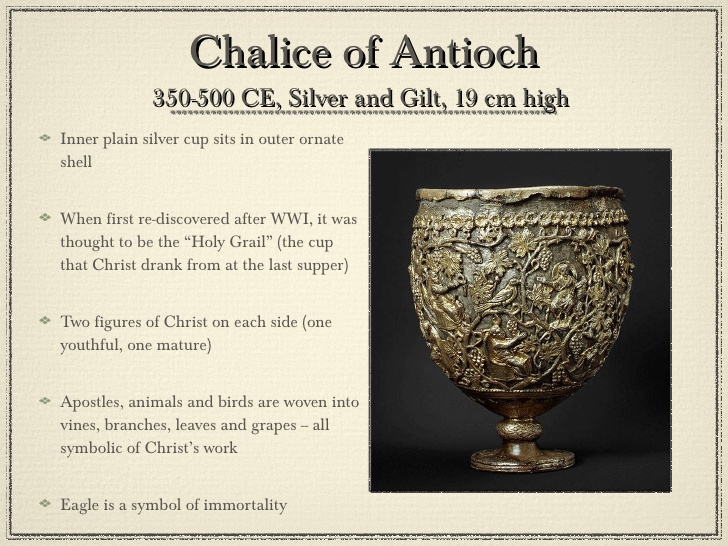
![]()
![]()
Disclaimer:
Some material presented will contain links, quotes, ideologies, etc., the contents of which should be understood to first, in their whole, reflect the views or opinions of their editors, and second, are used in my personal research as "fair use" sources only, and not espousement one way or the other. Researching for 'truth' leads one all over the place...a piece here, a piece there. As a researcher, I hunt, gather and disassemble resources, trying to put all the pieces into a coherent and logical whole. I encourage you to do the same. And please remember, these pages are only my effort to collect all the pieces I can find and see if they properly fit into the 'reality aggregate'.
Personal Position:
I've come to realize that 'truth' boils down to what we 'believe' the facts we've gathered point to. We only 'know' what we've 'experienced' firsthand. Everything else - what we read, what we watch, what we hear - is what someone else's gathered facts point to and 'they' 'believe' is 'truth', so that 'truth' seems to change in direct proportion to newly gathered facts divided by applied plausibility. Though I believe there is 'truth', until someone representing the celestial realm visibly appears and presents the heavenly records of Facts And Lies In The Order They Happened, I can't know for sure exactly what "the whole truth' on any given subject is, and what applies to me applies to everyone. Until then I'll continue to ask, "what does The Urantia Book say on the subject?"
~Gail Bird Allen
![]()
![]()














-
Urantia Book, 44:0.11 - The Celestial Artisans
Never in your long ascendancy will you lose the power to recognize your associates of former existences. Always, as you ascend inward in the scale of life, will you retain the ability to recognize and fraternize with the fellow beings of your previous and lower levels of experience. Each new translation or resurrection will add one more group of spirit beings to your vision range without in the least depriving you of the ability to recognize your friends and fellows of former estates.
-
Princess Bride 1987 Wallace Shawn (Vizzini) and Mandy Patinkin (Inigo Montoya)
Vizzini: HE DIDN'T FALL? INCONCEIVABLE.
Inigo Montoya: You keep using that word. I do not think it means what you think it means. -
Urantia Book, 117:4.14 - The Finite God
And here is mystery: The more closely man approaches God through love, the greater the reality -- actuality -- of that man. The more man withdraws from God, the more nearly he approaches nonreality -- cessation of existence. When man consecrates his will to the doing of the Father's will, when man gives God all that he has, then does God make that man more than he is.
-
Urantia Book, 167:7.4 - The Talk About Angels
"And do you not remember that I said to you once before that, if you had your spiritual eyes anointed, you would then see the heavens opened and behold the angels of God ascending and descending? It is by the ministry of the angels that one world may be kept in touch with other worlds, for have I not repeatedly told you that I have other sheep not of this fold?"
-
Urantia Book, Foreword - 0:12.12 - The Trinities
But we know that there dwells within the human mind a fragment of God, and that there sojourns with the human soul the Spirit of Truth; and we further know that these spirit forces conspire to enable material man to grasp the reality of spiritual values and to comprehend the philosophy of universe meanings. But even more certainly we know that these spirits of the Divine Presence are able to assist man in the spiritual appropriation of all truth contributory to the enhancement of the ever-progressing reality of personal religious experience—God-consciousness.
-
Urantia Book, 1:4.3 - The Mystery Of God
When you are through down here, when your course has been run in temporary form on earth, when your trial trip in the flesh is finished, when the dust that composes the mortal tabernacle "returns to the earth whence it came"; then, it is revealed, the indwelling "Spirit shall return to God who gave it." There sojourns within each moral being of this planet a fragment of God, a part and parcel of divinity. It is not yet yours by right of possession, but it is designedly intended to be one with you if you survive the mortal existence.
-
Urantia Book, 1:4.1 - The Mystery Of God
And the greatest of all the unfathomable mysteries of God is the phenomenon of the divine indwelling of mortal minds. The manner in which the Universal Father sojourns with the creatures of time is the most profound of all universe mysteries; the divine presence in the mind of man is the mystery of mysteries.
-
Urantia Book, 1:4.6 - The Mystery Of God
To every spirit being and to every mortal creature in every sphere and on every world of the universe of universes, the Universal Father reveals all of his gracious and divine self that can be discerned or comprehended by such spirit beings and by such mortal creatures. God is no respecter of persons, either spiritual or material. The divine presence which any child of the universe enjoys at any given moment is limited only by the capacity of such a creature to receive and to discern the spirit actualities of the supermaterial world.
-
Urantia Book, 11:0.1 - The Eternal Isle Of Paradise
Paradise is the eternal center of the universe of universes and the abiding place of the Universal Father, the Eternal Son, the Infinite Spirit, and their divine co-ordinates and associates. This central Isle is the most gigantic organized body of cosmic reality in all the master universe. Paradise is a material sphere as well as a spiritual abode. All of the intelligent creation of the Universal Father is domiciled on material abodes; hence must the absolute controlling center also be material, literal. And again it should be reiterated that spirit things and spiritual beings are real.
-
Urantia Book, 50:6.4 - Planetary Culture
Culture presupposes quality of mind; culture cannot be enhanced unless mind is elevated. Superior intellect will seek a noble culture and find some way to attain such a goal. Inferior minds will spurn the highest culture even when presented to them ready-made.
-
Urantia Book, 54:1.6 - True And False Liberty
True liberty is the associate of genuine self-respect; false liberty is the consort of self-admiration. True liberty is the fruit of self-control; false liberty, the assumption of self-assertion. Self-control leads to altruistic service; self-admiration tends towards the exploitation of others for the selfish aggrandizement of such a mistaken individual as is willing to sacrifice righteous attainment for the sake of possessing unjust power over his fellow beings.
-
Urantia Book, 54:1.9 - True And False Liberty
How dare the self-willed creature encroach upon the rights of his fellows in the name of personal liberty when the Supreme Rulers of the universe stand back in merciful respect for these prerogatives of will and potentials of personality! No being, in the exercise of his supposed personal liberty, has a right to deprive any other being of those privileges of existence conferred by the Creators and duly respected by all their loyal associates, subordinates, and subjects.
-
Urantia Book, 54:1.8 - True And False Liberty
There is no error greater than that species of self-deception which leads intelligent beings to crave the exercise of power over other beings for the purpose of depriving these persons of their natural liberties. The golden rule of human fairness cries out against all such fraud, unfairness, selfishness, and unrighteousness.

